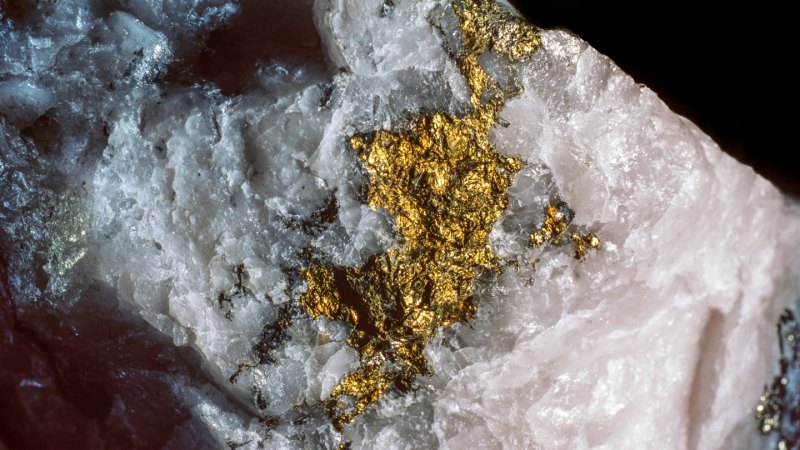When strained by earthquakes, underground networks of quartz veins can generate enough voltage to snatch gold from passing fluids, researchers report September 2 in Nature Geoscience. The findings explain how fluids carrying meager amounts of gold can concoct large nuggets, even in chemically inert settings.
“You find a 2-meter-wide quartz vein, and there’s a big gold nugget right in the middle, and nothing around [that] it could have reacted with,” says geologist Christopher Voisey of Monash University in Melbourne, Australia. “That’s a conundrum.”
Much of the world’s gold is mined from networks of branching mineral layers — or veins — made mostly of quartz, called orogenic gold deposits. These deposits are constructed piecemeal by earthquakes, usually around six to 12 kilometers underground. The temblors open fractures, which are then infiltrated by subterranean fluids that deposit quartz and gold, forming veins. Subsequent quakes create more fractures and reopen existing veins, incrementally swelling and ramifying the deposit over time.
Geologists have shown how this process can form small and diffuse quantities of gold, but not how the metal becomes concentrated in large nuggets, Voisey says. The fluids involved contain meager amounts of gold, and quartz is an unreactive medium.
Voisey and colleagues hypothesized that the key was quartz’s piezoelectricity, or its ability to develop electrical charge when strained. They plunged quartz slabs into solutions containing dissolved gold or gold nanoparticles and used actuators to strike some of the submerged slabs at a frequency of 20 hertz, mimicking small quakes (SN: 4/12/23).
The striking generated voltages up to 1.4 volts, causing gold grains to aggregate on the slab surfaces. No gold deposited on slabs that weren’t struck.
When the experiment was repeated with a chunk of a gold-quartz vein, gold deposition became concentrated on the already existing gold, Voisey says. The existing gold adopts the voltage of the charged and less conductive quartz, attracting more gold to itself and concentrating the mineralization, he explains. “It’s like a lightning rod for further reaction.”


